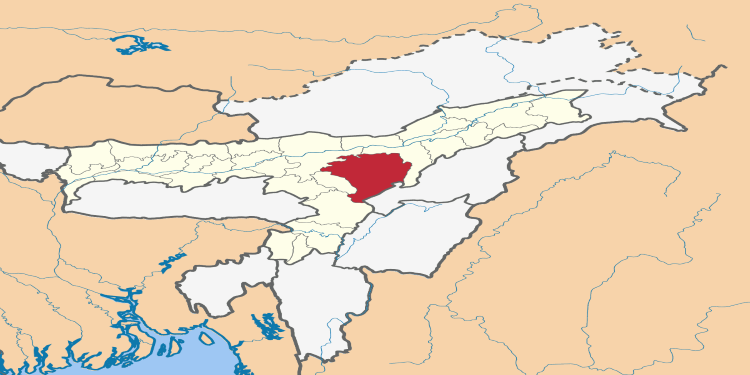About Karbi Anglong Plateau
Physiography of Karbi Anglong Plateau
- Geologically Karbi Anglong plateau is known as the oldest landform in Assam. It is pear-shaped and has an area of about 7000 km2.
- It has been subjected to extreme weathering and denudation and as a result, resistant sandstones of the Surma series which underlie them have contributed to the characteristic rugged topography with a number of hills purely of relic type.
- To the south lie the young folded ranges of North Cachar Hills and to the surrounding lowlands on all sides. The plateau has developed a radial drainage pattern.
- However, the central part still remains high with the Rengma Range reigning the east-central landscape.
- The highest peak is Dambusho (1363m) lies in this region.
The Climate of Karbi Along Plateau
- Due to variation in the topography, this hill zone experiences different climates in different parts.
- The winter commences from October and continues till February. During summer, the atmosphere becomes sultry.
- The temperature ranges from 6 degrees to 12 degrees and 23 degrees to 32 degree Celcius in summer. The average rainfall is about 2416 mm.
- The climate of the region is controlled by the same factors that apply to other parts of Northeast India.
- The Cherra-Dawki escarpment of Meghalaya and the Barail range obstruct to some extent the south-west monsoon winds coming from the south into the heart of the region.
- This provides a rain-shadow effect to the northwestern portion of Dimasa plateau and the Hojai-Lumding area of Nagaon district which constitute the southern part of the Karbi inhabited area, lofty ranges of Arunachal Pradesh protect the Brahmaputra Valley from the cold air masses of the Tibetan region in winter, and in summer they provide a congenital condition for relief rainfall from the south-west monsoon in the Brahmaputra Valley.
- During the early summer months, a strong ‘trough’ develops stretching from the western Gangetic valley up to northern Burma across eastern India, Bangladesh and southern North-East India.
- This trough belt attracts the south-westerly winds causing heavy downpour of rain and consequent check in the ripe of temperature in the summer/pre-monsoon months.
- The westerly disturbances i.e. the eastward-moving upper air troughs also bring in precipitation in the greater part of the Brahmaputra valley and the low hills flanking it during the late winter season.
The Soil of Karbi Along Plateau
- The process of soil formation in Karbi Anglong is generally slow on a foundation of Precambrian gneiss rock. The soil cover is shallow over the hill slopes with a thin surface layer of humus and is liable to erosion.
- Usually, these soils are red loam.
- Over the lower slopes with tertiary formations the soil cover is comparatively thicker and rich in organic matters.
- The plains and the river valleys are dominated by sandy loam soil, which constitutes the best agricultural fields in the district.
















